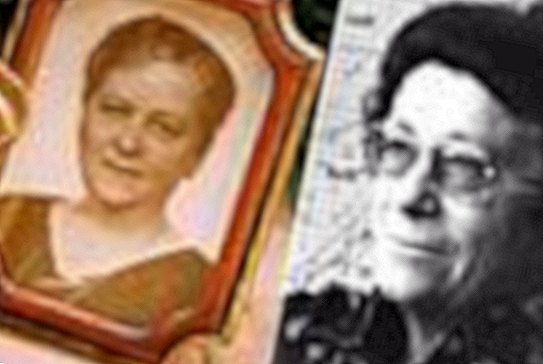Famous inventors

The parcel parachute (around 1900)

Advertising for Paulus' aerial acrobatics show
Man and his eternal dream of flying: No sooner did the first hot-air balloons float through the air at the end of the 18th century, even the first daredevils jumped to the earth with parachutes. But these were bulky, heavy and also unreliable. First a woman from Zellhausen, Hesse Kathe Paul, invented around 1900 a practical variant that is still used today: the parcel parachute. From now on, the silk screen was easy to roll up in a packing case and carry comfortably on the back. Of course, the trained seamstress has also tried her invention: Paulus, who lived and worked with the balloonist Julius Lattemann, sailed more than 100 times from a height of 1,000 meters to the ground. With the beginning of the First World War, the War Department also became aware of Paul's invention and used it as a consultant and parachute producer. Around 7,000 parachutes sewed Paul and her helpers to the end of the war, many soldiers owed their lives to the small packages.
The windscreen wiper (1903)
The idea came to the American Mary Andersonwhen she drove in the winter of 1903 by tram through New York. Again and again the driver had to get out to clear the windscreen of the snow - a problem that Anderson wanted to solve. She constructed a rubber squeegee that could be attached to the windshield. A spindle connected the wiper with a lever inside the vehicle. The driver now turned the handle, the wiper moved over the glass and cleaned it from snow and rain. Although inventors had tried mechanical windshield wipers before Anderson, the construction of the Alabama woman was the first to really work.
Lightweight Eyeglass Lenses (1973)
 © Schott AG
© Schott AGThe bosses of the Schott glassworks in Jena proved that they had a good feel for their rare apprenticeships in 1935 Marga Faulstich awarded. Because the 20-year-old from Weimar had great talent. In just a few years she rose from assistant to scientist. After moving to Mainz in 1952, she headed the research department for optical glasses. She was the first woman in a leading position at Schott-Glas. In all, she helped develop more than 300 optical glasses, but her most important invention was in 1973, six years before she retired: she made the lightweight "SF 64" lens, a blessing especially for people with high dioptric numbers. Because of the new material, the visual aids were much easier and more filigree. The time of the so-called "porthole glasses" was over.
The coffee filter (1908)
 © Melitta Group
© Melitta GroupHmm, Melitta, what would have become of the coffee culture, would not you have had a brilliant brainwave almost 100 years ago? Maybe we would still drink a crumbly concoction. The success story began at the beginning of the 20th century in Dresden. Melitta Bentz, Housewife and coffee lover, bothered for quite some time by the bitter sentence that remained in the cups during coffee making. Her sons' exercise books finally got her into an idea: She took a page of blotter paper and folded it to fit exactly in a brass pot. In these again she drilled holes and put it on a coffee pot. Now she filled coffee powder in the blotting paper bag, poured hot water - and into the pot dripping wonderful unpowered coffee! Melitta's husband Hugo was thrilled with the enjoyment - and also scented a good deal. Together with his wife, he founded a company in 1908, which soon became known internationally and bears the name of the inventor to this day.
Shaken Champagne (around 1805)
Just 27 years old Nicole Cliquotwhen her husband died and she inherited his champagne cellar. Soon she had to discover that formed by the previous method of bedding unwanted deposits in the noble drops. When trying to remove them, the precious carbon dioxide escaped from the bottles immediately. But Cliquot did not give up that fast. She tasted a bit and soon found a method that was successful: if the bottles were stored upside down ("sur pointe") and shaken at regular intervals ("remuage"), the sediments settled on the cork. Now you could easily remove them after opening and quickly close the bottles again, without the drink lost its tingle.
Dishwasher (1886)
Actually had Josephine Cochrane, Wife of a wealthy Illinois politician, has no reason to worry about dishwashing. There were staff for that. But after one of her numerous dinner parties, so much porcelain broke down that she decided angrily to do the dishes herself.Her motivation did not last long; The work was too tedious and the soap also touched her tender hands. Cochrane thought. Why not let a machine do the annoying rinsing? She sat down at the desk and designed a wire-holder rack in a large container. With the help of a crank, the wire frame was rotated while a water pump and a soap dispenser were operated simultaneously. In 1886 she patented her invention and soon presented it at the World's Fair. The experts were delighted and awarded her the prize for "the best mechanical design, durability and purpose". Together with a friendly engineer, Cochrane soon produced the "Garis-Cochrane Dishwashing Machine" as standard and found enthusiastic customers, especially among restaurant owners.
Other ingenious women:
- Marie Curie: Discovered together with her husband in 1889 the radioactive elements radium and pollonium.
- Ada Lovelace: The British mathematician developed in 1843 a concept for programmable calculating machines. After her the programming language ADA was named.
- Bette Graham: The American secretary invented in 1951 a correction fluid for typewriters, also called Tipp-Ex. A little while later, the single mother was a millionaire.
- Marion Donovan: The journalist from the USA produced the first disposable diaper in 1951.










